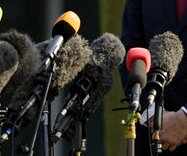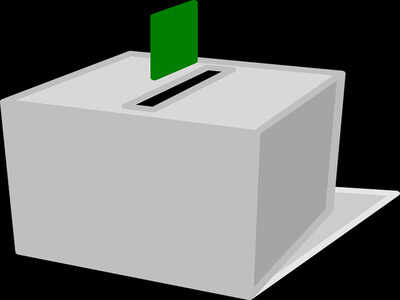
KHUNTI: Any entrant to Laterjang village is greeted by two things – its Pathalgarhi and graffiti that says “vote vyavastha murdabad”. Laterjang’s polling booth is 3.2 km away at Irud, though the Election Commission mandates that no voter should be further than 2 km from a polling station. Yet, within the first three hours of polling, 26% votes had been cast.
“There has been a steady flow of voters since polls opened. Everyone – old people, women with children – has been lining up to vote,” polling booth official Mukesh Kumar Jaiswal said.
For villages that follow Pathalgarhi, casting votes in an election would go against everything the movement stands for – tribal autonomy and supremacy of the Gram Sabha. Yet, Pathalgarhi leaders had issued a call to vote en masse and register their protest against the present dispensation. And the villages gave a stupendous response to the call – but only in the northern belt of the constituency.
These are Pathalgarhi villages, well-connected by roads and close to an administrative setup. Political parties have been able to break into these areas, campaign and mark their presence. Maoist presence, once impregnable, has waned now and only a spectre of the Red threat remains.
As one moves south, the polling trend is reversed. Graffiti on one wall says, “Behkaave mein kabhi na aana, soch samajh ke button dabana (never be swayed by anyone, vote wisely).” Another advises, “Loktantra ka samman rakhein, nirbhay hokar matdaan daalein (respect democracy, vote without any fear).”
Apprehensions about “sway” and “fear” had kept the administration on its toes, and not without reason. These villages are deep inside the forest, had staggering security deployment – polling at Birbanki took place in three stations close to the CRPF camp, with 100 paramilitary personnel on standby for about 2,000 voters. Most significantly, these are areas where Maoists are active.
The result – at Katui, deep inside the Saranda-Singhbhum forest range, only 13% turned out to vote till the end of polling. Even at Kochang, the heart of the Pathalgarhi movement, only 19% of the 989 people there cast their votes. This, despite the mukhiya’s call to vote. “We asked people to come out and vote. How will things change if the rulers do not? But no one paid heed,” said Paulus Hembrom, Congress observer at Sinjuri polling station, right next to Kochang. Of the 660 voters at Sinjuri, only 167 turned up.
Villagers vehemently deny any Maoist pressure against voting. “Maoists didn’t do anything. It is up to the people if they want to vote,” said Monica Boypai, booth level officer at Bohanda, where only 165 of 507 people voted. Every villager across the hilly forest belt said the same. Security personnel, however, said they could never be sure of what power structures are at play in these areas. “They may say this, but we found IEDs on the kachcha road from Sake to Baliadih. Who planted them right before polling?” a security personnel said.
“There has been a steady flow of voters since polls opened. Everyone – old people, women with children – has been lining up to vote,” polling booth official Mukesh Kumar Jaiswal said.
For villages that follow Pathalgarhi, casting votes in an election would go against everything the movement stands for – tribal autonomy and supremacy of the Gram Sabha. Yet, Pathalgarhi leaders had issued a call to vote en masse and register their protest against the present dispensation. And the villages gave a stupendous response to the call – but only in the northern belt of the constituency.
These are Pathalgarhi villages, well-connected by roads and close to an administrative setup. Political parties have been able to break into these areas, campaign and mark their presence. Maoist presence, once impregnable, has waned now and only a spectre of the Red threat remains.
As one moves south, the polling trend is reversed. Graffiti on one wall says, “Behkaave mein kabhi na aana, soch samajh ke button dabana (never be swayed by anyone, vote wisely).” Another advises, “Loktantra ka samman rakhein, nirbhay hokar matdaan daalein (respect democracy, vote without any fear).”
Apprehensions about “sway” and “fear” had kept the administration on its toes, and not without reason. These villages are deep inside the forest, had staggering security deployment – polling at Birbanki took place in three stations close to the CRPF camp, with 100 paramilitary personnel on standby for about 2,000 voters. Most significantly, these are areas where Maoists are active.
The result – at Katui, deep inside the Saranda-Singhbhum forest range, only 13% turned out to vote till the end of polling. Even at Kochang, the heart of the Pathalgarhi movement, only 19% of the 989 people there cast their votes. This, despite the mukhiya’s call to vote. “We asked people to come out and vote. How will things change if the rulers do not? But no one paid heed,” said Paulus Hembrom, Congress observer at Sinjuri polling station, right next to Kochang. Of the 660 voters at Sinjuri, only 167 turned up.
Villagers vehemently deny any Maoist pressure against voting. “Maoists didn’t do anything. It is up to the people if they want to vote,” said Monica Boypai, booth level officer at Bohanda, where only 165 of 507 people voted. Every villager across the hilly forest belt said the same. Security personnel, however, said they could never be sure of what power structures are at play in these areas. “They may say this, but we found IEDs on the kachcha road from Sake to Baliadih. Who planted them right before polling?” a security personnel said.
#ElectionsWithTimes
Elections 2019
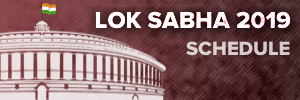
Trending Topics
LATEST VIDEOS
City
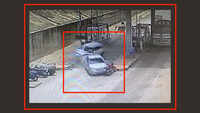 Caught on cam: High speed car hits another vehicle at toll gate of outer ring road in Hyderabad
Caught on cam: High speed car hits another vehicle at toll gate of outer ring road in Hyderabad 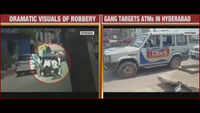 Robbery caught on camera: Gang loots Rs58.9 lakh from an ATM van
Robbery caught on camera: Gang loots Rs58.9 lakh from an ATM van 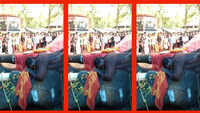 Kerala: Mahout cries, as elephant Cherpulassery Parthan dies; video goes viral
Kerala: Mahout cries, as elephant Cherpulassery Parthan dies; video goes viral 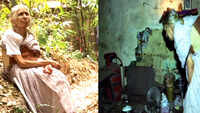 This Pune botanist has been spending her life without electricity
This Pune botanist has been spending her life without electricity
More from TOI
Navbharat Times
Featured Today in Travel
Quick Links
Lok Sabha Election Schedule 2019Lok Sabha Election NewsDelhi Capitals teamMI team 2019Rajasthan Royals 2019RCB team 2019Maharashtra Lok Sabha ConstituenciesBJP Candidate ListBJP List 2019 TamilnaduShiv Sena List 2019AP BJP List 2019Mamata BanerjeeBJP List 2019 MaharashtraPriyanka GandhiBJP List 2019 KarnatakaAMMK Candidate List 2019BJP List 2019 WBLok Sabha Elections in Tamil NaduBSP List 2019 UPNews in TamilLok Sabha Poll 2019Satta Matka 2018PM ModiMahagathbandhanNagpur BJP Candidate ListChandrababu NaiduTamil Nadu ElectionsUrmila MatondkarNews in TeluguMadras High CourtTejashwi YadavArvind KejriwalTejasvi SuryaPawan KalyanArvind KejriwalYogi AdityanathJaya PradaSatta King 2019Srinagar encounter
Get the app




